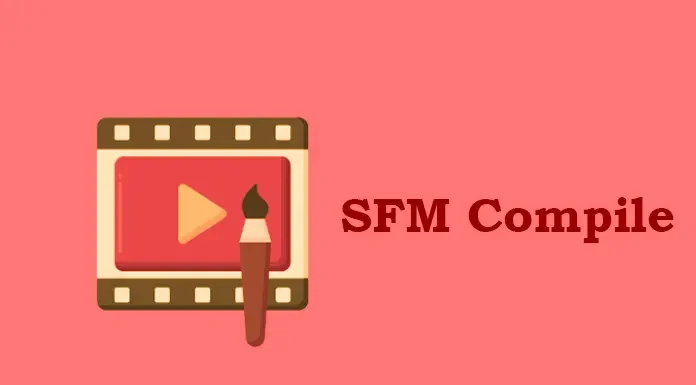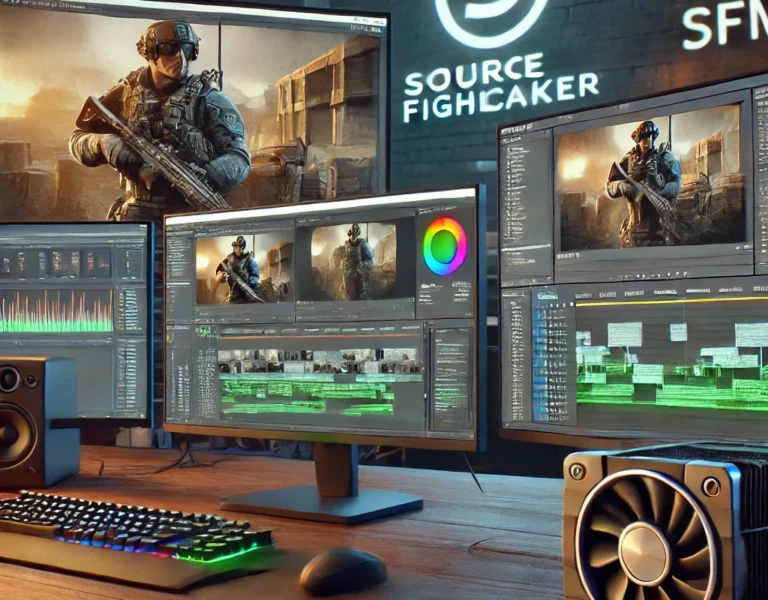SFM Compile: The Complete Guide to Streamlining Your Source Filmmaker Workflow
If you’ve ever used Source Filmmaker (SFM), you already know how powerful it is for creating 3D animations, shorts, and cinematic projects. But while the creative process is fun, the technical side can feel overwhelming. That’s where SFM Compile comes in. Compiling helps you prepare, optimize, and finalize your assets so they run smoothly inside SFM and are ready for rendering or sharing with others.
In this guide, you’ll learn everything about SFM Compile—from the basics to advanced techniques. We’ll break down workflows, file types, optimization tricks, common errors, and even share real-world examples to help you level up your animation projects.
What is SFM Compile?
At its core, SFM Compile is the process of turning your raw models, textures, animations, and scripts into formats that Source Filmmaker can use effectively. Think of it as cooking: your raw ingredients (meshes, textures, rigs) need to be processed into a complete dish (a compiled model) before you can serve it.
Unlike rendering, which creates a final video output, compiling prepares the assets you’ll use in your animation. For example, if you’ve built a custom 3D character in Blender, you’ll need to compile it before it can appear in SFM.
Why is SFM Compile Important?
Skipping the compile step is like skipping seasoning in a recipe—the end result won’t be satisfying. Here’s why compiling is crucial:
-
Efficiency: Compiled files load faster and reduce lag inside SFM.
-
Optimization: It ensures your models and animations use less memory.
-
Collaboration: Sharing compiled models makes it easier for others to use your work.
-
Reliability: Prevents issues like missing textures or broken rigs.
Example: An animator working on a short film noticed that their raw, uncompiled model caused SFM to freeze during previews. After compiling the model with optimized textures, the project ran smoothly, saving hours of frustration.
Getting Started with SFM Compile
Before diving in, let’s cover what you need.
System Requirements
-
A computer capable of running Source Filmmaker smoothly.
-
Sufficient storage (compilation can generate multiple files).
-
Basic understanding of 3D file structures.
Tools You’ll Need
-
Source Filmmaker (SFM).
-
Valve’s Source SDK tools (like
studiomdl). -
A text editor (Notepad++ or VSCode for QC files).
-
Optional: 3D modeling software (Blender, Maya, 3ds Max).
Installation
-
Install SFM via Steam.
-
Download the Source SDK tools.
-
Add the required tool paths to your environment variables.
-
Test by running a simple compile command in your console.
The SFM Compile Workflow
1. Preparing Assets
Organizing your files is the first step. Create folders for models, textures, and scripts. A clean structure makes compiling less error-prone.
Example Folder Structure:
2. Writing the QC File
The QC file acts as your recipe card. It tells the compiler how to process your model.
Basic QC File Example:
Common mistakes include missing brackets or incorrect file paths. Always double-check your syntax.
3. Using Compilation Tools
Valve’s studiomdl tool is the most common way to compile. You run it through the command line, pointing it to your QC file.
Example Command:
There are also community-made scripts and tools that simplify the process for beginners.
4. Testing and Troubleshooting
After compiling, load the model in SFM. Check for:
-
Proper textures.
-
Correct bone rigging.
-
Animation playback.
SFM Compile File Types
Here’s a quick breakdown of the file formats you’ll encounter:
| File Type | Extension | Purpose |
|---|---|---|
| Models | .mdl |
The final compiled model |
| Animations | .ani |
Stores animation sequences |
| Materials | .vmt & .vtf |
Define textures and surface details |
| Sounds | .wav or .mp3 |
Audio for models or scenes |
| Scripts | .qc, .vcd |
Instructions for compiling or choreography |
Optimization Techniques for SFM Compile
Compiled files can be heavy, but you can lighten the load with these strategies:
-
Reduce Poly Count: Simplify models to lower polygon counts.
-
LOD (Level of Detail): Use lower-quality models when objects are far away.
-
Texture Compression: Save textures in
.vtfwith DXT compression. -
Batch Compiling: Automate multiple compiles with scripts to save time.
Tip: A project with 50+ characters was optimized by using LODs. The result? Rendering time dropped by nearly 40%.
Advanced SFM Compile Features
For pros looking to push further:
-
Custom Physics: Add ragdoll physics for realistic motion.
-
Custom Animations: Create and import unique animation cycles.
-
Automation Scripts: Use Python or batch files to speed up repetitive compiles.
-
Source Control Integration: Store QC files in Git for version tracking.
Common Errors in SFM Compile and How to Fix Them
Even experienced animators hit roadblocks. Here are the most common issues:
-
Missing Textures: Check
.vmtpaths. -
QC File Errors: Validate syntax with an editor.
-
Broken Rigs: Ensure bones are named consistently.
-
Crashes During Compile: Usually caused by oversized textures or corrupted files.
Pro Tip: Keep a log file of your compile process. It helps trace errors quickly.
Best Practices for Efficient SFM Compile
-
Stay Organized: A messy folder = endless troubleshooting.
-
Reuse Templates: Save common QC file setups.
-
Document Changes: Keep notes for future edits.
-
Test Frequently: Don’t wait until the final compile to test.
Quick Checklist Before Compiling:
-
Assets named properly.
-
QC file validated.
-
Textures optimized.
-
Backup created.
Case Studies & Real-World Examples
Case Study 1: Indie Animator’s Workflow
An indie animator was producing a fan short using SFM. Initially, uncompiled assets caused frequent crashes. After adopting a strict SFM Compile workflow, they reduced file sizes by 60% and cut editing time in half.
Quote from an Experienced Creator:
“Compiling isn’t just a technical step—it’s the difference between a smooth animation and a broken project.”
Conclusion
Mastering SFM Compile can transform how you work inside Source Filmmaker. From speeding up projects to eliminating frustrating errors, compiling is an essential skill for both beginners and pros. Once you build the habit of compiling properly, you’ll wonder how you ever worked without it.
So, get started today—organize your assets, write that QC file, and see your animations come to life with fewer hiccups.
FAQ: SFM Compile
Q1: What is SFM Compile in simple terms?
It’s the process of preparing models, textures, and animations so Source Filmmaker can use them efficiently.
Q2: Do I need to compile for every project?
Not always, but custom models or assets require compiling.
Q3: Is SFM Compile beginner-friendly?
Yes—once you learn the basics, it becomes second nature.
Q4: What’s the difference between compiling and rendering?
Compiling prepares assets; rendering produces the final video.



![Swimsuit Edition [ABBB] – 1.20 21 Swimsuit Edition – Chapter Breakdown & Deep Dive](https://sfm-compile.net/wp-content/uploads/2025/09/Lucid_Origin_A_vibrant_and_colorful_illustration_of_a_swimsuit_3-768x429.jpg)


